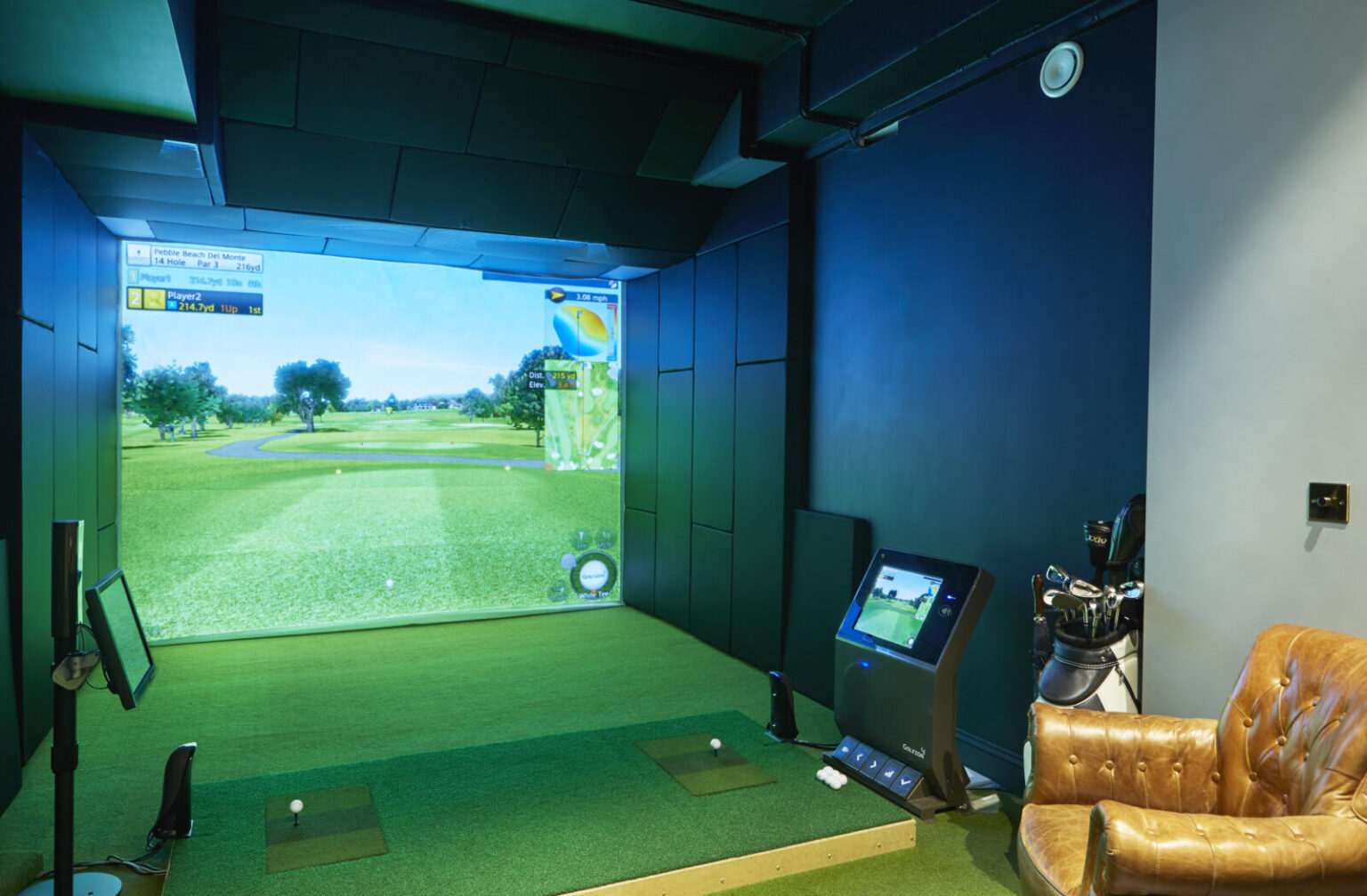Creating the ultimate indoor golf simulator room requires attention to lighting, sound, and space. Among these elements, choosing the right curtains plays an important role in controlling natural light and reducing glare for an optimal playing experience.
Proper curtains also help enhance privacy and sound absorption, improving overall room comfort. Dark, heavy fabrics, such as stage curtains from Direct Fabrics or similar options from other sources, effectively block unwanted sunlight and prevent reflections on the simulator screen, while lighter curtains can soften ambient light, ensuring a balance between visibility and comfort.
Understanding how curtains influence the environment will help anyone set up a golf simulator room that combines functionality with comfort. This guide covers what to look for and why the right curtains matter.
Essential Elements of an Indoor Golf Simulator Room
A successful indoor golf simulator room requires attention to space functionality, equipment quality, and lighting control. These factors ensure an effective setup for realistic play and comfortable practice.
Selecting the Ideal Room and Layout
Choosing the right room involves considering ceiling height, square footage, and accessibility. A minimum ceiling height of 9 feet is recommended to accommodate typical simulator projections and swings without obstruction.
The room should provide at least 12 feet in length and 10 feet in width for full swing range and safe ball flight paths. Hard flooring like wood or laminate is preferable to carpet to reduce ball bounce and improve sensor accuracy.
Furniture and other items must be placed to avoid interfering with swings. Positioning the tee box area away from walls and obstructions improves safety and shot realism.
Choosing the Best Golf Simulator Equipment
Simulator choice depends on budget and intended use. Basic models include launch monitors and nets, while advanced setups add HD projectors, impact screens, and software for course simulation.
Sensors or cameras should provide accurate data on ball speed, launch angle, spin, and club path. Multi-sensor systems typically provide better shot analysis.
Quality impact screens paired with nets or curtains protect walls and assist in capturing accurate shot feedback. Curtains can reduce glare and enhance image contrast by controlling light.
Optimizing Lighting and Space
Lighting should be adjustable and avoid direct glare on the screen or sensors. Using dimmable LED fixtures with adjustable color temperature can create ideal conditions.
Curtains or blackout blinds help control external light and reflections. Positioning lights away from the sensor line and using diffusers prevents sensor errors.
The room layout must allow enough clearance behind and beside the player for safe swings. Creating a dedicated space for equipment storage and seating enhances usability.
How to Select the Perfect Curtains for Your Golf Simulator Room
Choosing the right curtains involves balancing light control, sound absorption, and aesthetics. It is essential to focus on materials that reduce noise and glare while also complementing the room’s style. Installation must prioritize safety and ease of use.
Curtain Materials for Sound and Light Control
Thick, heavy fabrics like velvet or blackout polyester block out ambient light effectively and reduce echo. These materials help maintain consistent lighting and improve image clarity on the golf simulator screen.
Acoustic curtains, specifically created with dense fibers, absorb sound waves, cutting down reverberation caused by hard surfaces. Cotton and wool blends provide moderate sound absorption but also provide better breathability.
Consider layering curtains, combining a blackout liner with a decorative outer panel for maximum functionality. This method helps control light without sacrificing room style or ventilation.
Installation Tips for Safety and Functionality
Curtains should be mounted securely using heavy-duty rods or tracks rated for the fabric’s weight. This prevents sagging or accidents during movement.
Ensure there is enough clearance between the curtain and the hitting area to avoid interference with golf swings or equipment. Curtains should be positioned so they can be drawn fully open and closed easily.
Using ceiling-mounted tracks can hide hardware and allow smooth curtain operation. It also optimizes space in smaller rooms, keeping the golf simulator area uncluttered.
Enhancing Style and Atmosphere with Curtain Design
Curtain colors and patterns should complement the overall decor, favoring neutral or earth tones for a relaxed, focused environment. Darker shades reduce light spill and add a professional look.
Simple, clean lines in curtain design work best to prevent visual distraction. Avoid busy patterns that might clash with simulator visuals or create glare.
Adding textured fabrics or subtle patterns can increase warmth and depth in the room, enhancing the relaxing ambiance necessary for extended practice sessions.
Conclusion
Creating the ultimate indoor golf simulator room is about more than just equipment and space—it’s about creating an environment that enhances both the gameplay experience and overall comfort. Choosing the right curtains plays a critical role in achieving this balance by controlling natural light, reducing glare, and absorbing sound. The right curtains can improve the quality of your simulator’s visuals while also ensuring privacy and comfort during your sessions. By carefully selecting materials, design, and installation methods, you can craft a space that not only functions effectively but also provides a stylish and comfortable atmosphere for hours of enjoyable practice.
Read the full article here

